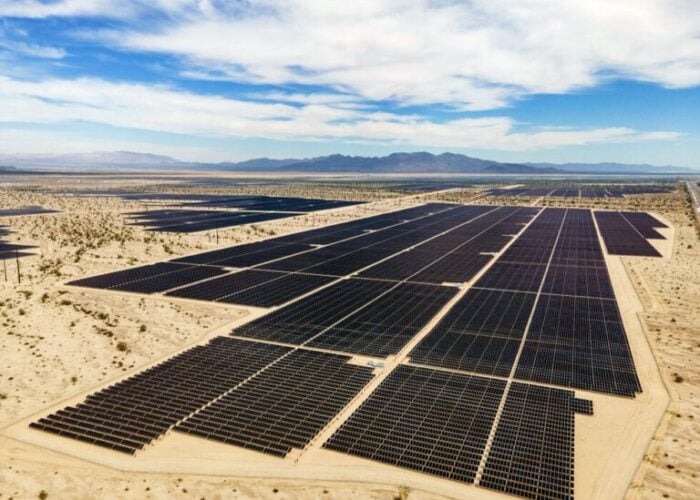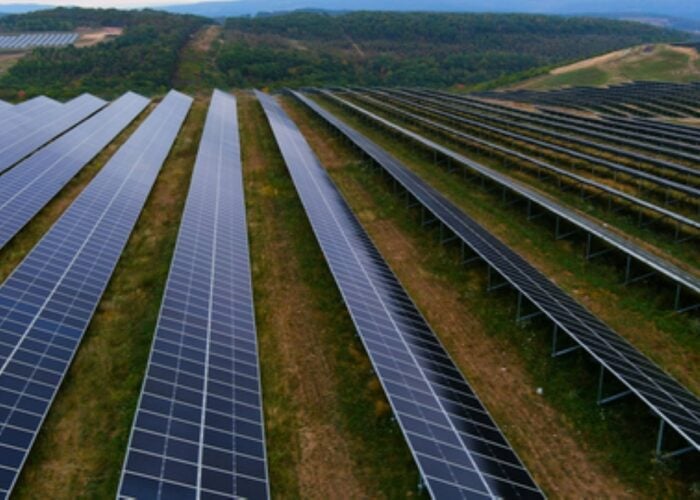SolarCity's IPO earlier this year looks like a ray of light amid some pretty cloudy weather in 2012. The solar shakeout continues to gobble up companies like a collapsing sun. The peak in consolidation IHS researchers say will come from 2013 can't come soon enough for many in the industry.
But while SolarCity's success may not be enough to warm the chilling effect of 2012 and 2011 upstream, downstream the picture is rosier.
Try Premium for just $1
- Full premium access for the first month at only $1
- Converts to an annual rate after 30 days unless cancelled
- Cancel anytime during the trial period
Premium Benefits
- Expert industry analysis and interviews
- Digital access to PV Tech Power journal
- Exclusive event discounts
Or get the full Premium subscription right away
Or continue reading this article for free
Kevin Genieser, Managing Director and Global Head of Clean Technology Banking at Morgan Stanley, said that the upstream solar industry continued to be challenged this year. During his keynote at the Going Green conference in San Francisco last month Genieser singled out the distressed sales of Q Cells to Hanwha and MiaSole to Hanergy.
“The industry has matured,” he said. “We've seen new players come into the market – utilities, very traditional types of capital and funds starting to acquire these assets for single digit returns. Solar has very much come of age in the downstream side. It's accepted as a proven technology.”
Conedison, NRG Energy and Mid-American were just some of the power players attracted to the certain returns of solar investments, he said. Heavyweight industrial players were also making their presence felt in the industry. ABB, GE, Itochu, Dow, Hitachi, Basaf, Honeywell, Alstom and Schneider are among the giants that are scooping up minnows from parts of the downstream ecosystem.
Big data and green IT would continue to be an investment opportunity, he said, as companies such as opower empower consumers and companies such as Silverspring Networks to develop technology that could help solar settle into a smarter grid.
Future of solar in the cloud
Tom Price, the ebullient Director of Policy and Market Strategies for CleanPath Ventures, advocates the power of cloud computing in the solar industry.
“The future of solar is in the cloud,” he said. “It's a joke, but it's true. Creating frictionless virtual transactions will lower the barrier to entry so much that choosing solar will become a lifestyle decision you do on an app, not just an investment decision you do in a bank.”
Price is the originator of the “burrito theory” – that solar should be as easy to order as any other product or service, so much so that you could ‘order’ solar on your iPhone in the lunch queue for a burrito.
Solar potential for 75% of California residents and businesses “ends up on the cutting room floor” just because they don't own the property where they use power, he said. Shared solar changes that by allowing people to “virtually install” solar from off-site locations and connect that PV electricity to their utility bill.
“Right now, the law says to get the benefits of renewable energy fuel production you have to be physically connected to the point of that energy production,” he said. “The solar on your roof has to be connected to the meter that's in your name only. That doesn't make any sense. Commercial warehouses are often owned by one company and then leased for tax purposes by another company.
“The law does not allow you to put solar on the roof and benefit somebody other than the tenant. The person who owns the building and the person who pays the power bill are not the same – their interests are not aligned.”
But Price is not just complaining. He has been working hard with utilities to re-draft a California Senate bill that they scuttled at the 11th hour in August.
Almost everyone loved the idea of SB 843, the shared solar bill introduced last year by Senator Lois Wolk. The Department of Defense, San Diego Gas & Electric, school boards, installers and entrepreneurs were all listed as fans of this legislation, which would have opened up solar to renters and businesses. But it just so happened that California's largest utility, Pacific Gas & Electric and Southern California Edison did not like the bill.
“What really struck me after legislation failed was the amazing range of institutions and people who had been following it,” said Price. “They said they had been all set and thought it was a done deal.”
A cleantech consortium in San Diego, an investor bank in San Francisco and school districts in the Central Valley were among those who had their plans of shared solar derailed, he said.
But hope has returned in the form of SB 43, a revamp of the failed bill, which was announced last week and will be introduced once a new California senate returns on 3 January.
“Allowing customers to subscribe to a system offsite simplifies the process of selecting renewable energy,” said Senator Wolk. “These community facility arrangements will come in many different forms. A congregation could power their homes by sharing the electricity generated by a solar system on their church’s roof. A school campus could subscribe to a portion of a system located at a different school to power their entire campus.”
SB 43 could create an estimated US$2 billion in economic activity from the construction of new distributed solar facilities and generate up to US$60 million in state and local tax revenue while creating up to 7,000 jobs.
After some close consultation with all of California's utilities, the new bill is different in two major ways. It will start as a pilot programme, capped at 500MW, after which the California Public Utilities Commission will decide if it should be continued or expanded. It also includes explicit carve outs for building projects in low-income urban areas.
“There's a lot of talk these days about virtual or shared economies where you don't have to own some expensive thing to benefit from it,” he said. “You can just use it when you want to. Energy should be no different. Why shouldn't we share ownership or use of a solar array and get the benefits of the lower cost just like we do a car or bank or vacation home?
“For a lot of reasons, it will mark the beginnings of an explosive growth in solar.”






